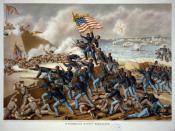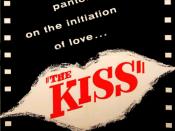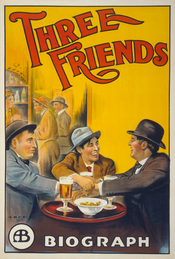Film HistoryReview of "Reel History" by Robert ToplinAs far back as the creation of mankind, humans have had the need to exaggerate or manipulate reality in an attempt to make themselves or their situations appear grandeur and thus more appealing. The original cave man could be caught drawing larger and additional animals on the walls of his cave that tell the story of him being a mighty hunter and thus impressing the short supply of women in the area. We have all heard the story of the ÃÂbigÃÂ fish that got away from the fisherman trying to impress his audience or the guy who just could not be left alone by his adoring throngs of female admirers. In the same fashion, historic film also takes poetic license in respect to dressing up the truth in order to make it more interesting and more entertaining to the general public.
However, ÃÂthose who speak and write about history also exercise degrees of interpretive license. Teachers and scholars are selective in the way they privilege facts in their narratives, and draw conclusions in partisan waysÃÂ (pg. 2). Robert Toplin, in his book Reel History, defends the film industryÃÂs use of exaggeration and poetic license in delivering entertainment and history to the general public in order to entice them to become subjected to a taste of history. I agree with Mr. Toplin that it is better to have an altered view of history than no view at all.
In his effort to endorse the film industryÃÂs view of the historic genre of film, Mr. Toplin then goes on to defend the many arguments presented by critics that feel that historic producers are bending history for the purpose of entertainment and therefore offer no historic value to the film goers. Firstly, Mr. Toplin believes that ÃÂcinematic history would never come to the screen if it could not excite the interest of a wide range of viewers with different income levels, cultural interests and educational achievements (pg. 10). Like any other business, its number one concern is staying in business. If the film is not of interest to the general population, it will not be made. Therefore, some side plots or coloring of the truth must be permitted in order to get the historic film into production. ÃÂIn a related way, judgments about cinematic historians must take into account both the market appeal of their productions and their success in communicating informed, thoughtful, and provocative perspectives on the pastÃÂ (pg. 16). Often, for a film to be true to history would require it to be long and boring. If the film is to make it to the big screen, some facts must be omitted and the time perspective must be shortened. According to Toplin, ÃÂTo make history understandable and exciting, filmmakers have to narrow the scope of their portrayalsÃÂ (pg. 17). Such films as the Titanic had to have components such as the love story added to them in order to sell the film and allow the general audience to be able to sit through the entire film. This three plus hour movie of historical nature not only won an Oscar, but was a huge money-making success. Although there may have been many additions to the truth in this film, there was still plenty of historical fact that made it through the cinematic flare and hoopla. Had this film been packed with a lot of historical information rather than a love story as the main focus, the ÃÂcinematic historians may have lost their audiences in the labyrinth of detail and complexity and would have had difficulty raising funds for future projects (pg. 18). Additionally, for those interested in the historical plot of the film, attempting to deliver too much historical information could lead to leaving out essential information. ÃÂBy representing a good deal of specific evidence about history, they raise the expectations of reviewers, leaving critics hungry for more (pgs. 18-19). The historical film, therefore, must represent the fine line between historical facts and entertainment qualities. Only by adding just the right mix will the audience exit the film with a fair amount of historical facts and remember them.
The book then switches the focus to the critics ÃÂpreoccupation with pointing out tiny factual mistakesÃÂ (pg. 59). The author, as well as myself, both believe that even more important then historical facts are the lessons derived from history. Only by learning from our past blunders can we prevent ourselves from making the same mistakes in the future. Mr. Toplin uses the historical film Glory as his example of such a motion picture where the tiny historical mistakes should be overlooked in favor of the lessons learned. This film ÃÂportrays the efforts of a group of African- Americans fighting as Union soldiers during the Civil WarÃÂ (pg. 59). The film has been criticized for such historical inaccuracies as the group attacking from the north to the south in contradiction of the true direction of south to north from Fort Wagner. Additionally, the film allows one to believe that the unit was comprised of former slaves, while ÃÂfree blacks manned the real Massachusetts Fifty-fourthÃÂ (pg. 60).Further more, the caption at the end of the film claims that ÃÂthe bravery of this unit at Fort Wagner inspired Congress to authorize more black regiments for the Union army, however, this had actually occurred months earlierÃÂ (pg. 60). Although these facts may have been misrepresented in the film in favor of cinematic license, the film still contained many historical facts that were brought to light for a new generation of cinematic viewers. ÃÂMovies can teach history, as Glory nicely demonstratedÃÂ (pg. 60). By allowing the filmmakers to shorten the time-line of the movie and combine several personalities into one combined character, the film allows the viewer to experience the flavor of the time period. ÃÂFilmmakers emphasize a biographical approach to history, treating personalities of a few characters as suggestive of the troubles and progress experienced by many peopleÃÂ (pg. 60). In the end, history was taught. It may not have been accurate in every detail however; it was retained by the audience.
Mr. Toplin spends several chapters going over many more films that have been Oscar nominated or big box office successes. In each, he argues the point that the minor historical inaccuracies should be overlooked in favor of the filmÃÂs entertainment value and eventual historic lesson to the audience. In the end, what is wrong with using some minor factual inaccuracies in the interest of maintaining the audiencesÃÂ attention and making the history lesson easier to follow? Such films convey a lesson to the audience that they would not have learned had they not been tempted to watch the movie by the filmmakersÃÂ use of big star names and creative license. These films can also arouse the audiencesÃÂ emotions to a far greater level than the actual historical event, had it been told with its true details. This can allow the audience to further investigate the event and learn the real facts of the situation or similar situations. Although these films may not consist of pure fact, they do get across the general idea of what was happening at that time in history and in a way more palatable to the ordinary person.
Mr. ToplinÃÂs ÃÂdefense of HollywoodÃÂ is well supported and easy to see from an audienceÃÂs perspective. He is accurate when he asserts that these films still communicate historic facts even if there are minor discrepancies. Mr. ToplinÃÂs habit of stringing successive questions together to form a paragraph, made the reading a bit extraneous, but overall the text was easy to read. His inclusion of major films in the text made it easier to see his points since I was familiar with the pictures and therefore recalled the particular scenes he mentioned in his analysis. This book supports the use of historical film in education classes as a way of living up a drab presentation of a historical situation. The teacher can always interrupt with the real facts during the film as a way of giving a true picture of the situation while allowing a more palatable presentation to be shown. I believe that the use of historical films, even though they may include some inaccuracies, is preferable to the elimination of this genre. Hopefully we will learn from our historical mistakes and try not to repeat them.





